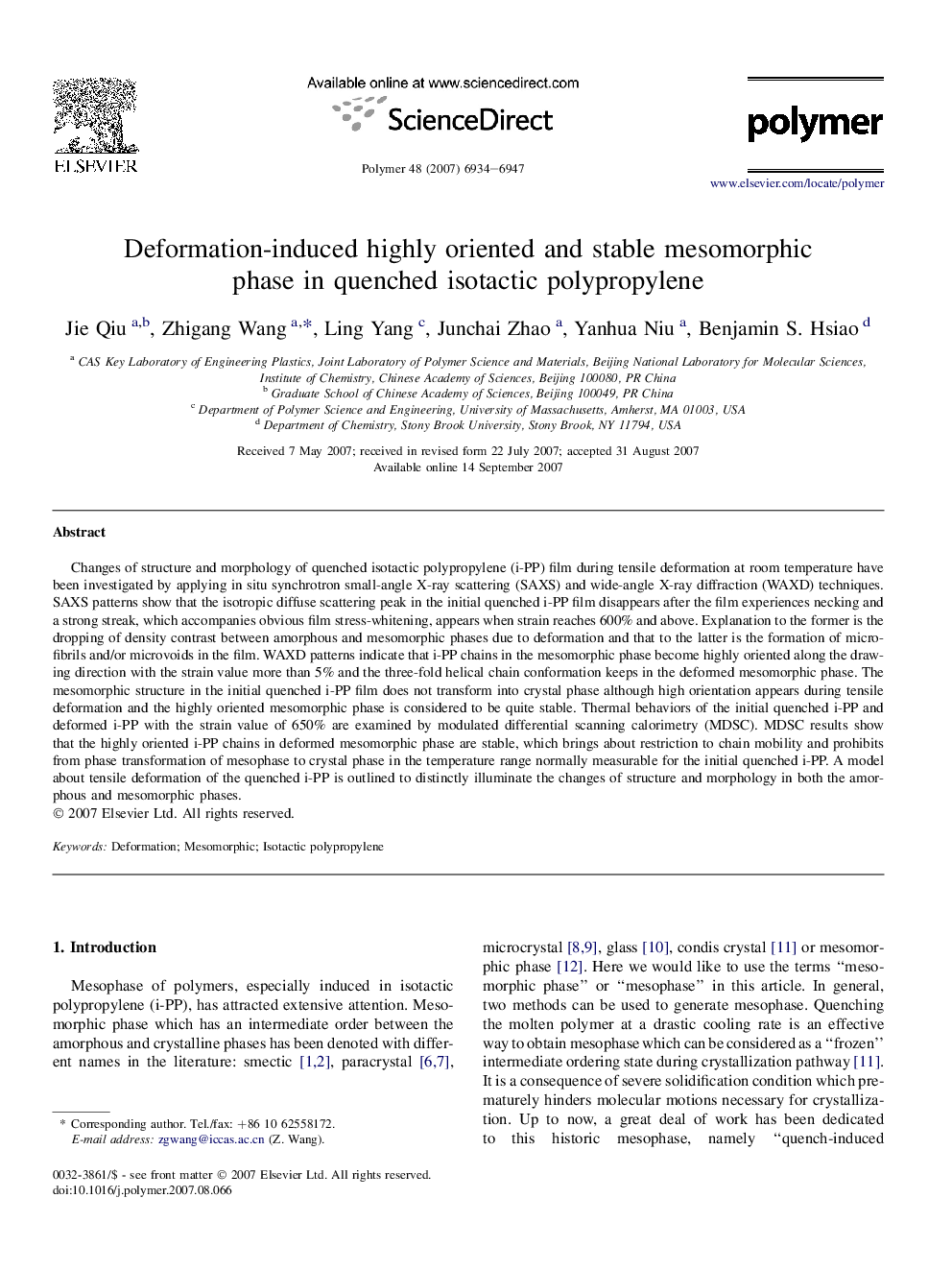| Article ID | Journal | Published Year | Pages | File Type |
|---|---|---|---|---|
| 5187774 | Polymer | 2007 | 14 Pages |
Abstract
Changes of structure and morphology of quenched isotactic polypropylene (i-PP) film during tensile deformation at room temperature have been investigated by applying in situ synchrotron small-angle X-ray scattering (SAXS) and wide-angle X-ray diffraction (WAXD) techniques. SAXS patterns show that the isotropic diffuse scattering peak in the initial quenched i-PP film disappears after the film experiences necking and a strong streak, which accompanies obvious film stress-whitening, appears when strain reaches 600% and above. Explanation to the former is the dropping of density contrast between amorphous and mesomorphic phases due to deformation and that to the latter is the formation of microfibrils and/or microvoids in the film. WAXD patterns indicate that i-PP chains in the mesomorphic phase become highly oriented along the drawing direction with the strain value more than 5% and the three-fold helical chain conformation keeps in the deformed mesomorphic phase. The mesomorphic structure in the initial quenched i-PP film does not transform into crystal phase although high orientation appears during tensile deformation and the highly oriented mesomorphic phase is considered to be quite stable. Thermal behaviors of the initial quenched i-PP and deformed i-PP with the strain value of 650% are examined by modulated differential scanning calorimetry (MDSC). MDSC results show that the highly oriented i-PP chains in deformed mesomorphic phase are stable, which brings about restriction to chain mobility and prohibits from phase transformation of mesophase to crystal phase in the temperature range normally measurable for the initial quenched i-PP. A model about tensile deformation of the quenched i-PP is outlined to distinctly illuminate the changes of structure and morphology in both the amorphous and mesomorphic phases.
Related Topics
Physical Sciences and Engineering
Chemistry
Organic Chemistry
Authors
Jie Qiu, Zhigang Wang, Ling Yang, Junchai Zhao, Yanhua Niu, Benjamin S. Hsiao,
